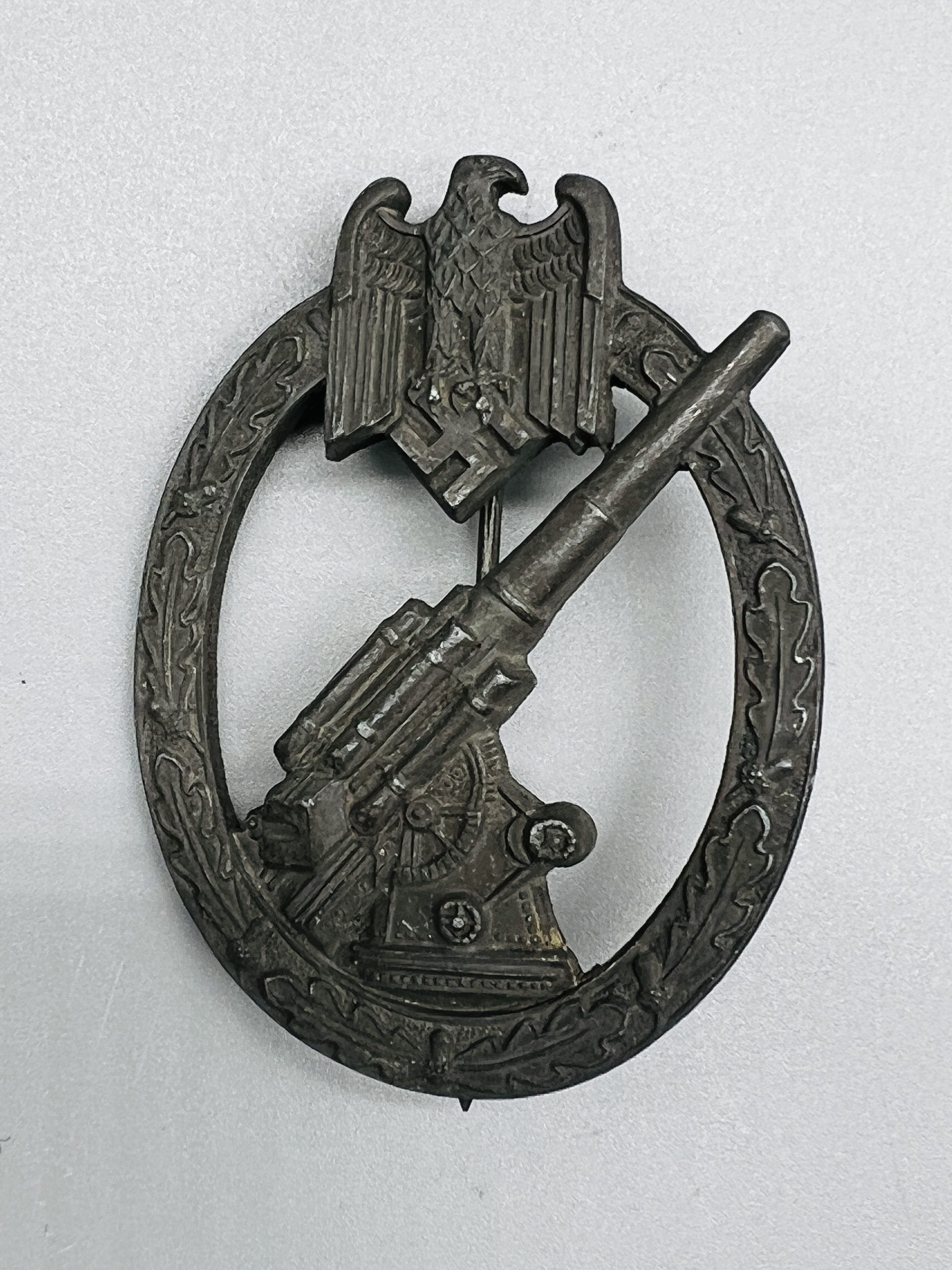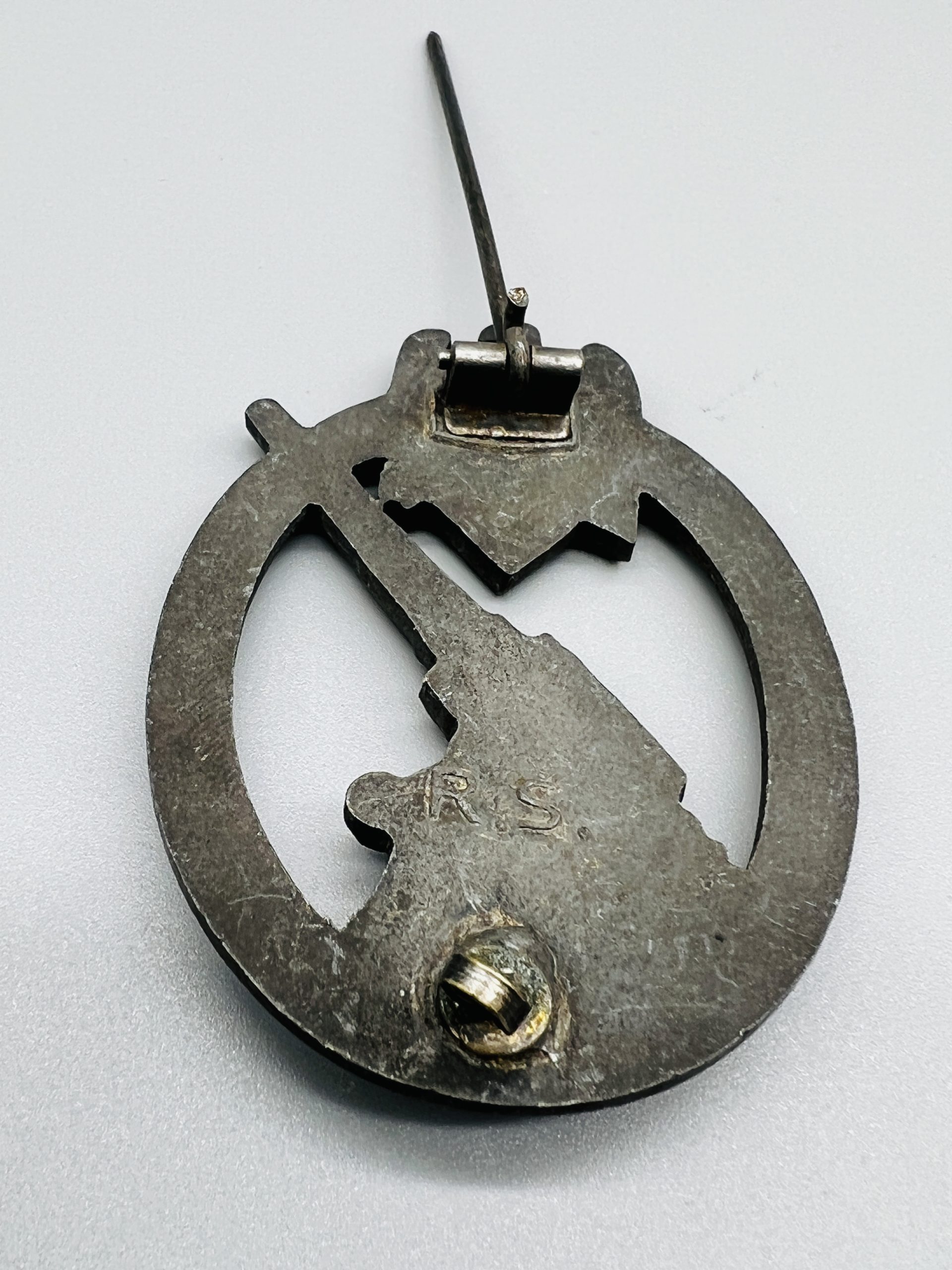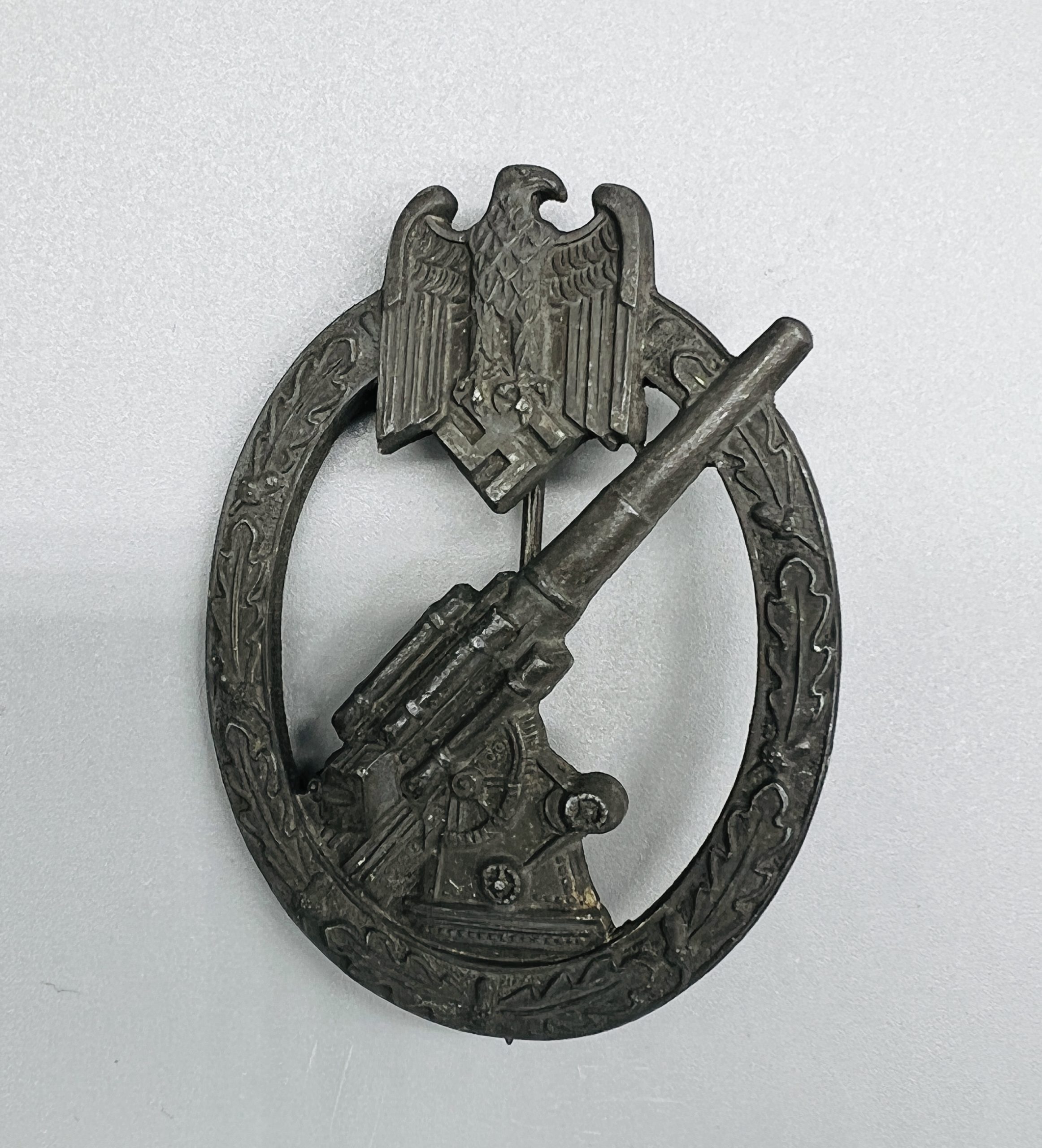Description
Heer Flak Badge
The Heer Flak Badge (Heeres-Flakabzeichen) was instituted on 18.7.1941 by the firm Ernst Wilhelm Peekhaus of Berlin, which was awarded to members of flak batteries, sound-locator, and searchlight crews and those in supporting roles.
Criteria for the Heer Flak Badge came from a recommendation by commanders of the rank of General der Artillerie or above. It was awarded after the accumulation of 16 points or could also be awarded outside of the points system for an act of merit or bravery in the performance of anti-aircraft duties. If the candidates’ battery brought down an enemy aircraft then the crew members were awarded four points. If two batteries were involved then each battery received two points. Both officers and crews were eligible for the badge. The commanding officer for an anti-aircraft unit was eligible for the badge once half of his men also qualified for the badge.
Unlike the similar Luftwaffe Anti-Aircraft Badge (Flak-Kampfabzeichen der Luftwaffe), points were only awarded for the downing of aircraft and not ground targets. The award was also available to searchlight crews and sound-locator crews. German Army searchlight crews and sound-locator crews that assisted in the action by detection of aircraft could be awarded one point each.







